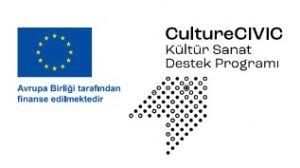Close to the Landscape, Far Away
The starting point of the project is the program “The Joy of Painting” presented by Bob Ross, which was broadcast on TRT 2 screens in the 1990s. In this program, Bob Ross makes nature paintings in half an hour from Alaska, where he lived for many years. These paintings were usually landscapes with trees, streams, lakes, mountains, and the sky, in which human-made things and people were barely visible. It bore the traces of a peaceful space, a safe space untouched by human hands. What does a landscape image engraved in memory in this way corresponds to today? What threats do the nature of the cities we live in undergo today? What are the threats the nature of the cities we live in face?How has it transformed and how does it take place in memories?
The project will seek answers to such questions through the landscapes of Düzce. Düzce is a city that was granted city status by then-President Süleyman Demirel after the 1999 earthquake. However, it is a city that has been subjected to rapid and unplanned urban construction.
Can we approach this issue through the right to the city concept proposed by Henri Lefebvre in 1968?
According to Lefebvre (b.1968 / d.2016), the right to the city includes the equal access of all residents to the potential of the city and the equal rights and freedoms of residents in decision-making processes about the city. Lefebvre sees the right to the city as a political project and utopia. Is it possible to read the unplanned urban structuring of Düzce as the control of urban space by the state and capital as Lefebvre foresees?
As someone who has been living in the Konuralp region of Düzce for about 7 years, I have seen what kind of change and transformation the city has gone through. Düzce, which is known for its streams, lakes, waterfalls and forests, ranks first in Turkey with its unplanned construction, factories and intense air pollution. One of the most heard words from the people of the region is that in the place that is not visible from the buildings now, where once the cows used to walk around and the trees look endless. At this point, while considering our rights over the city, the project proposes to look at this issue not only for humans, but also for non-human creatures in the aftermath of the unplanned urbanization. The project proposes to rethinkthe nature of the landscapes of Düzce touched and untouched by man, and taking utopia one step further.
“‘Close to the Landscape, Far Away’”,is financed by CultureCIVIC, a project
by the European Union.
